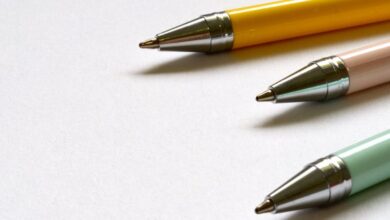How to Buy the Best Printer for a Home Office
In today’s digital age, the need for physical copies hasn’t vanished; rather, it remains essential for many home office setups. Whether you’re printing reports, labels, or important documents, having the right printer can significantly enhance your productivity. With a plethora of options available, choosing the best printer for your home office can feel overwhelming. Let’s explore key factors to consider that will help you make an informed decision.
Assess Your Printing Needs
Before diving into specific printer models, take a moment to evaluate your printing habits. How often do you print? Are you frequently producing color documents or graphics, or do you mostly need black and white pages? Consider whether you’ll be printing photos, reports, or presentations, as this will influence the type of printer you should choose. If your printing needs are minimal, a compact inkjet printer could suffice. However, if you require high-volume printing, a laser printer may be the better choice for efficiency and cost-effectiveness.
Inkjet vs. Laser Printers
Understanding the differences between inkjet and laser printers is crucial. Inkjet printers excel in producing high-quality color images and are generally more affordable upfront. They are ideal for users who print photos or colorful documents. However, the cost of ink cartridges can add up, especially for frequent use.
Laser printers, on the other hand, are designed for speed and efficiency. They can print large volumes quickly and are often more economical in terms of cost per page. If your home office requires a lot of text-heavy documents, a monochrome laser printer could be the perfect fit. Evaluate your specific needs to determine which type aligns best with your printing habits.
Consider Connectivity Options
Modern printers offer various connectivity options, making it easier to integrate them into your home office. Look for printers that support Wi-Fi, allowing you to print from multiple devices without the hassle of cables. Wireless printing capabilities can streamline your workflow, enabling you to send documents from your laptop, tablet, or smartphone with ease.
Additionally, consider whether you need features like mobile printing or cloud services. Many printers are compatible with apps that allow you to print directly from your mobile device or from cloud storage services. These features can enhance convenience and flexibility, especially if you’re often on the move.
Evaluate Print Speed and Quality
Print speed is a crucial factor, particularly if you regularly produce large documents. Laser printers typically have faster print speeds compared to inkjet models, making them more suitable for high-volume tasks. However, if quality is paramount, pay attention to the printer’s DPI (dots per inch) rating. Higher DPI ratings indicate better print quality, which is essential for printing detailed graphics or images.
Reading reviews and specifications can provide insight into the performance of different models. Look for users’ feedback on print quality, speed, and reliability to gauge whether a printer meets your expectations.
Check Operating Costs
When selecting a printer, it’s essential to consider long-term operating costs beyond the initial purchase price. Investigate the price of replacement ink or toner cartridges and the expected page yield. Some printers may have a lower upfront cost but can become expensive over time due to high ink or toner prices. Consider models that offer high-yield cartridges or subscription services for ink delivery, which can save you money in the long run.
Look for Additional Features
Modern printers come equipped with a range of features that can add value to your home office. Functions like scanning, copying, and faxing can be incredibly handy, especially if you need to digitize documents or share information quickly. All-in-one printers provide these functionalities without taking up extra space. Also, consider whether you need an automatic document feeder, duplex printing (double-sided printing), or a touchscreen interface for easier operation.
Final Thoughts
Choosing the right printer for your home office involves careful consideration of your specific needs, budget, and the features that matter most to you. By assessing your printing habits, understanding the differences between inkjet and laser printers, and evaluating connectivity options, print speed, quality, and operating costs, you can select a printer that enhances your productivity and meets your requirements. A well-chosen printer can not only simplify your tasks but also contribute to a more efficient and organized home office environment.







